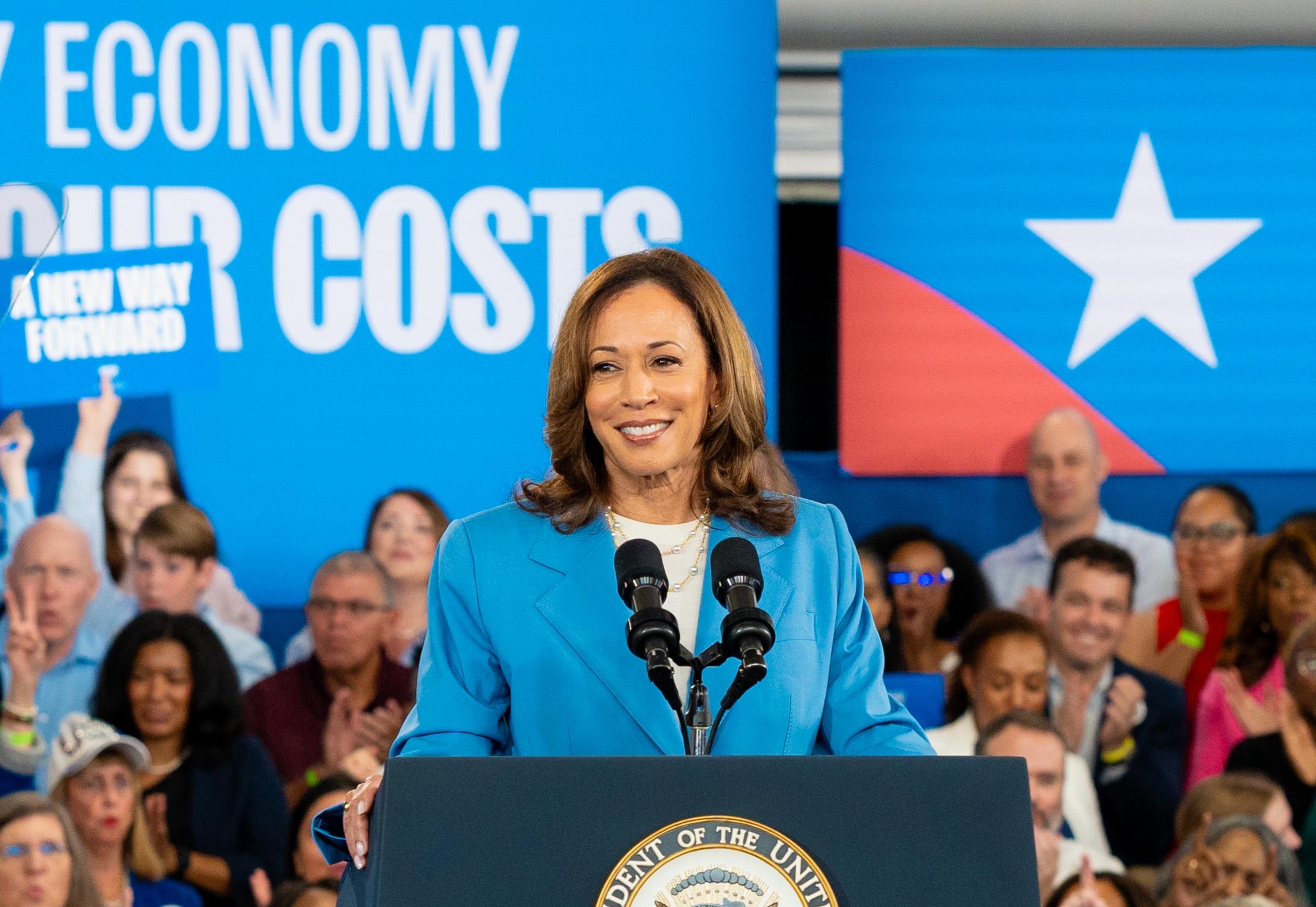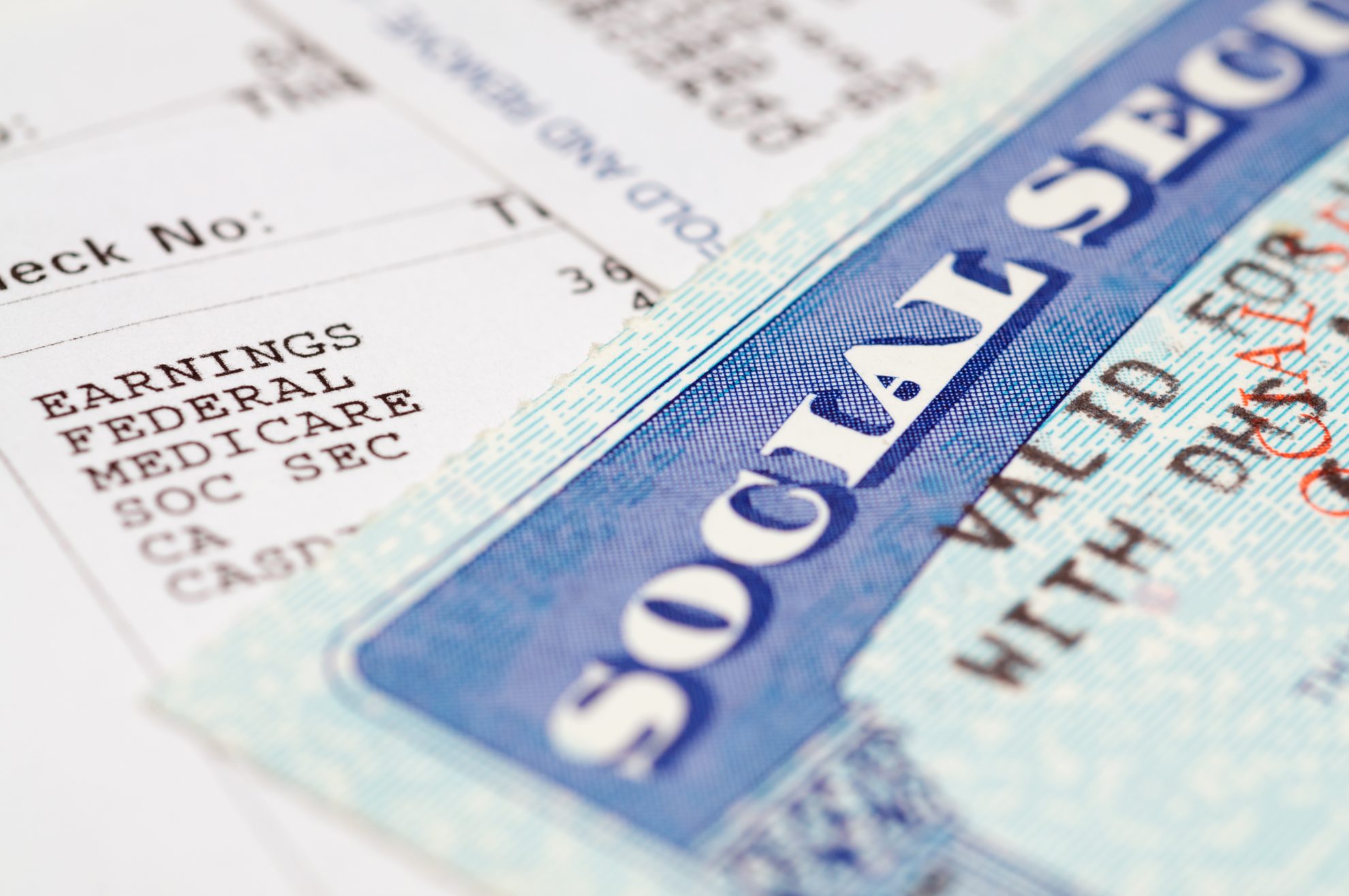Kam
Topline Preliminary Estimates
- 10-Year Revenue (Billions) +$1,697
- Long-run GDP -2.0%
- Long-Run Wages -1.2%
- Long-Run FTE Jobs -786,000
Tax Foundation General Equilibrium Model, September 2024.
Latest Updates
- Updated to include the America Forward credits and new spending proposals.
- Originally published.
See
Related: Trump Tax Proposals
With less than one month left in the 2024 presidential campaign, Vice President Kamala Harris has provided updated details of her fiscal and economic agenda. On
Harris She Tax
( 01 Harris The The Harris The Including the economic impacts of the tax increases, the net effect could increase deficits by roughly $3.4 trillion over the next decade.The wide range of possibilities reflects considerable uncertainty about her fiscal policy stance, leaving a large void regarding how she might deal with the already unprecedented, dangerous, and unsustainable federal debt trajectory.Detailed Harris Tax ProposalsHarris’s tax plan relies on higher taxes on businesses and high earners to raise new revenues as outlined in President Biden’s FY 2025 budget with some revisions (to capital gains taxes, as noted), combined with several tax credits. All provisions are modeled as starting in calendar year 2025 unless otherwise noted.Major business provisions modeled:
Increase the
corporate income taxA corporate income tax (CIT) is levied by federal and state governments on business profits. The
rate from 21 percent to 28 percent
Increase the corporate alternative minimum tax introduced in the
InflationInflation is when the general price of goods and services increases across the economy, reducing the purchasing power of a currency and the value of certain assets. The It
Reduction Act from 15 percent to 21 percent
Quadruple the stock buyback tax implemented in the Inflation Reduction Act from 1 percent to 4 percent
Make permanent the excess business loss limitation for pass-through businesses
- Further limit the deductibility of employee compensation under Section 162(m)Increase the global intangible low-taxed income (GILTI) tax rate from 10.5 percent to 21 percent, calculate the tax on a jurisdiction-by-jurisdiction basis, and revise related rulesRepeal the reduced tax rate on foreign-derived intangible income (FDII)
- Major individual, capital gains, and estate taxAn estate tax is imposed on the net value of an individual’s taxable estate, after any exclusions or credits, at the time of death. The
provisions modeled: - Expand the base of the net investment income tax (NIIT) to include nonpassive business income and increase the rates for the NIIT and the additional Medicare tax to reach 5 percent on income above $400,000
- Increase top
- individual income taxAn individual income tax (or personal income tax) is levied on the wages, salaries, investments, or other forms of income an individual or household earns. The The Individual
Tax Tax - above $1 million and tax unrealized capital gains at death above a $5 million exemption ($10 million for joint filers)
- Limit retirement account contributions for high-income taxpayers with large individual retirement account (IRA) balances
Tighten rules related to the estate taxTax carried interest as ordinary income for people earning more than $400,000Limit 1031 like-kind exchanges to $500,000 in gains
- Exempt tipped income from income taxation for occupations where tips are currently customary
- Expand the Section 195 deduction limit for startup expenses from $5,000 to $50,000.Major tax credit provisions modeled:Revive and make permanent the American Rescue Plan Act (ARPA) child tax credit (CTC) and increase the CTC for newborns to $6,000 in the first year of life
- Permanently extend the ARPA earned income tax credit (EITC) expansion for workers without qualifying childrenProvide a $25,000 tax credit for first-time homebuyers over four yearsWe also modeled various miscellaneous provisions for corporations, pass-through businesses, and individuals, including several energy-related tax hikes largely pertaining to fossil fuel production. While the Biden budget improperly characterized fossil fuel provisions as subsidies, many are deductions for costs (or approximations of costs) incurred.
- Major provisions not modeled by us, but included in total fiscal impacts based on Biden administration estimates:
- Repeal the base erosion and anti-abuse tax (BEAT) and replace it with an undertaxed profits rule (UTPR) consistent with the Organisation for Economic Co-operation and Development (OECD)/G20 global minimum tax model rules
- Replace FDII with unspecified research and development (R&D) incentives
- Create a 25 percent “billionaire minimum tax” to tax unrealized capital gains of high-net-worth taxpayers
- Permanently extend the ARPA premium tax credits (PTCs) expansion (we do include PTCs in our distributional analysis)
- Create America Forward tax credits, which provide support for investment in specific industries subject to additional eligibility criteria
Changes to tax compliance and administration
- Long-Run Economic Effects of Vice President Harris’s Tax Proposals
- We estimate the tax changes in Harris’s tax proposals would reduce long-run GDP by 2.0 percent, the capital stock by 3.0 percent, wages by 1.2 percent, and employment by about 786,000 full-time equivalent jobs. The Nor do we include the proposed unspecified R&D incentives that would replace the lower tax rate on foreign-derived intangible income FDII.
- Revenue and Debt Effects of Vice President Harris’s Tax Proposals
Across the major provisions modeled by Tax Foundation, we estimate that Harris’s tax plan would raise $2.2 trillion of tax revenue from corporations and $1.2 trillion from individuals from 2025 through 2034.
For tax proposals from the Biden FY 2025 budget, we relied on estimates from the White House Office of Management and Budget (OMB) for provisions we did not model, including the billionaire minimum tax, UTPR, various international tax changes for oil and gas companies, smaller international tax changes, improvements to tax compliance and administration, and unspecified R&D incentives to replace FDII.
- In total, accounting for all provisions, we estimate the budget would raise just over $4.1 trillion in gross revenue from tax changes over the 10-year budget window.
- Tax cuts, like the
- tax exemptionA tax exemption excludes certain income, revenue, or even taxpayers from tax altogether. Tax
This On The However, after factoring in reduced tax collections and a smaller economy, the debt-to-GDP ratio would decline only slightly, to 200 percent. - Adding more uncertainty and potentially increasing deficits substantially, Harris may extend the TCJA for people making under $400,000, as the FY 2025 budget mentions but does not formally include in the budget accounting. Harris Using CRFB’s central estimate, the cost of extending TCJA for all people earning less than $400,000 would be about $2.2 trillion over a decade, in addition to the cost of Harris’s proposed child tax credit expansion.
- Vice President Harris has not specifically outlined all her proposed changes to federal spending. While we do not assume any additional spending as part of our formal score, Harris has proposed investing in affordable childcare and long-term care programs, including an expansion of Medicare, among other unspecified spending proposals, which would reduce net revenue collection further.
- To tally up the range of potential deficit impacts from Harris’s proposals, we include as a proxy for potential spending the net change in spending according to CRFB’s central estimate of $1.8 trillion, which reflects net spending increases specified in the FY 2025 budget and other campaign announcements covering border security, support for business, early education and childcare, higher education, family and medical leave, and long-term care programs.
Assuming $1.8 trillion of additional spending and a $2.2 trillion revenue loss for TCJA extension, Harris’s combined fiscal policies could add as much as $2.3 trillion to deficits over the next decade on a conventional basis.
Under this scenario, and after accounting for the economic effects of the tax increases, we estimate deficits could increase by roughly $3.4 trillion over the next decade on a dynamic basis.
Alternatively, Harris could specify additional tax increases to offset the cost of TCJA extension, which would have additional negative impacts on the economy, or Harris could simply allow the TCJA to expire. Harris could also abandon part or all of the FY 2025 spending proposals.
Distributional Effects of Vice President Harris’s Tax Proposals
Vice President Harris’s tax plan would raise marginal income tax rates faced by higher earners and corporations while expanding tax credits for lower-income households, resulting in substantially increased redistribution of income through the tax code. Our Businesses
The The The bottom quintile’s after-tax income would increase by 16.5%, largely due to expanded tax credits. The top 1 percent would see their income decrease by 9.5 percent. The top 1 percent of earners would see their after-tax earnings decrease by 7.3 percent.
On an overall dynamic basis, a smaller economy would result in lower after-tax revenues. On average, tax filers in the top three quintiles would experience a drop in after-tax incomes, while the bottom quintile would still see an increase, albeit reduced to 11.8 percent, driven by the permanent changes to the CTC, EITC, and PTC.
Analysis of Harris’s Tax Credit and Tax Cut Proposals
Like the Biden administration, Harris’s tax plan puts a heavy emphasis on tax credits. Harris would restore the CTC under the 2021 American Rescue Plan Act. This increased the credit for older children from $2,000 to $3,000 and for younger children from $3,600 in 2021. She would also increase the credit amount to $6,000 for newborns, resulting in CTCs that provide $6,000 for infants under one year of age, $3,600 children aged two to five, and $3,000 children aged six and older. Tax Foundation estimates that Harris’ CTC would cost $1.6 trillion in 10 years if it were done on a conventional basis. The expansion would reduce long-term economic output by approximately 0.1 percent, by removing and lengthening credit phaseouts. This would increase marginal tax rates on both sides of the income spectrum. The smaller economy would result in further revenue losses for the federal government, increasing the fiscal cost to $1.7 trillion over the next decade.
Harris would extend or make permanent the expansion of health insurance PTC subsidies enacted under ARPA, which are set to expire at the end of 2025, and expand the EITC for single and joint filers who do not claim children on their tax returns. Over 10 years, permanence for the PTCs would cost about $238 billion, and the EITC expansion about $160 billion.Harris also proposes several new housing tax incentives and penalties. She would expand the low income housing tax credit and create a credit for starter homes. However, Harris would limit deductions for interest and depreciationDepreciation is a measurement of the “useful life” of a business asset, such as machinery or a factory, to determine the multiyear period over which the cost of that asset can be deducted from taxable income. Depreciation is a method of reducing the value of investments over time.
for large property investors.
Expanding a proposal in the FY 2025 budget, the Harris campaign proposes providing an average of $25,000 for all eligible first-time homebuyers, with additional support for first-generation homebuyers. The cost of the subsidy would depend on how it is structured and limited. If the plan aims to reach 4 million first-time buyers, then the fiscal cost could be around $100 billion over the next four years. The FY 2025 budget includes other housing credits and subsidies that will cost another $100 billion in the next decade. The exemption and any safeguards would complicate the tax code in general, while not benefiting many low-income workers, given the small percentage of the population that works in tipped jobs. We estimate an exemption would cost around $118 Billion over the 10-year budget period on a conventional basis.
Harris proposed increasing the Section 195 deduction from its current $5,000 level to $50,000. We estimate that the change will reduce revenue by approximately $24.5 billion on a conventional basis over the 10-year window based on previous revenue estimates from similar proposals made by the Joint Committee on Taxation. The Harris campaign has also recently published a proposal to create “America Forward” credit. While the campaign has not released a specified design of the credits, they have suggested the program would cost around $100 billion and would be “paid for by a portion of the proceeds of international tax reform.” Without more specifics, the proposed changes to international tax policy may already be included in the tax hikes proposed by Biden and adopted by Harris, raising the risk that this offset could be double counted.
While some form of pro-investment incentive is welcome, the policy has numerous problems: it would be limited to an arbitrary set of industries, including designated advanced and strategic industries as well as designated traditional or legacy industries, but not actually available to everyone. The credits would also be conditioned on a handful of other social goals, adding complexity and depleting the power of the incentives.
Subsidies and Price Controls Likely to Backfire
Many, but not all, of Harris’s housing policy proposals flow through the tax code. In terms of non-fiscal policy levers, the Harris plan includes regulatory streamlining to make construction easier, a crackdown on certain pricing tools in rental property management, and a new fund for public housing.
Harris’s reliance on subsidies for supply-constrained housing would be economically harmful for families, as it would boost demand and lead to higher housing prices. While some of her policies do target supply, like the expanded low-income housing tax credit and the credit for starter homes, these boutique tax breaks have not been effective historically.
Subsidies for different niches of the housing market are a poor substitute for better tax treatment of housing investment broadly. Multifamily housing construction still has not recovered to 1986 levels, as the Tax Reform Act of 1986 reduced the deductibility of investment.
Instead of reversing that poor tax treatment, the Harris package would further penalize rental housing construction by peeling back depreciation and interest deductions for certain large property investors, reducing investment incentives. These penalties would be in addition to a Biden-Harris administration proposal aimed at capping rent increases by disallowing certain deductions for depreciation.
Harris would deploy economically ruinous price controls in several other ways. Harris would cap the cost of insulin at $35 and out-of-pocket expenses for prescription drugs at $2,000 for all households, accelerate the speed of Medicare negotiations for prescription drug prices as part of the Inflation Reduction Act, and ban certain price increases for food and groceries.
Price controls harm consumers by reducing incentives to produce price-controlled goods. Price controls on prescription medications, for example, are likely to deter new drug development. This could result in up to 135 less drugs being brought to market by 2039. Harris’s proposed price controls for groceries poorly address a problem that does not exist, as grocery profit margins are much lower than average across industries.While not a tax policy, the Harris campaign’s proposal to expand Medicare coverage to include at-home long-term care services is a significant expansion of the program that was not included in the Biden administration’s budget. A Brookings Institution estimate of the cost of adding an in-home long-term care benefit would cost roughly $40 billion per year, and CRFB estimates it would cost $200 billion over 10 years as a central estimate.Top Tax Rates Would Be among the Highest in the Developed World
Harris’s subsidies would largely be funded by raising top tax rates on corporate and individual income to levels far above international norms.
The current top combined corporate tax rate–including the average of state rates–is 25.6 percent. Harris would raise it to 32.2%, the second highest corporate tax rate within the OECD, behind Colombia’s 35%. This is roughly equal to the OECD’s average. The top combined rate under Harris would increase to 45.1 percent, before accounting for the proposed additional 5 percent Medicare tax, of which half falls on the employer. The top combined rate would rise to 47.6 % if the employee portion was included. The current top combined
capital gains taxA capital gains tax is levied on the profit made from selling an asset and is often in addition to corporate income taxes, resulting in double taxation.
is 29.1 %, which includes the 20 % capital gains tax, the 3.8 % NIIT and the average state and local income taxes on capital gains. Harris’s proposals, which tax capital gains of high earners at 28 percent while raising the NIIT from 3 to 5 percent would result in a top capital gain tax rate of 38.3 percent – the second highest tax rate in the OECD behind Denmark’s 42 %. Harris’s proposals would also result in the top dividend tax rate being near the highest rate in the OECD. Under Harris’s proposals, it would rise to 58.1 percent–the highest in the OECD. Harris’s proposal would raise it to 58.1 percent, the highest rate in the OECD.
Compare 2024 Tax Plans
Modeling notes
We estimate the impact of taxes policies using the Tax Foundation General Equlibrium Tax Model, including the latest updates that allow detailed modeling of US multinational companies. The model produces both conventional and dynamic estimates of tax policy. Conventional estimates attempt to estimate the potential behavioral effects of tax policies by holding the size of the economy constant. Dynamic revenue estimates take into account both macroeconomic and behavioral effects of tax policies on revenue. The model also produces estimates of how policies impact measures of economic performance such as GDP, GNP, wages, employment, capital stock, investment, consumption, saving, and the trade deficit.
Note, however, that our conventional and dynamic estimates for the stock buyback tax do not account for behavioral shifting from buybacks to dividends, which would also shift the individual income
tax baseThe tax base is the total amount of income, property, assets, consumption, transactions, or other economic activity subject to taxation by a tax authority. A narrow tax base can be inefficient and non-neutral. A broad tax base allows for lower tax rates and reduced administration costs.
from capital gains to dividends.Regarding Vice President Harris’s proposed changes to the GILTI regime, we modeled most of the major changes, including the 75 percent GILTI inclusion rate, country-by-country application, the reduction in the foreign tax credit (FTC) haircut to 5 percent, elimination of the qualified business asset investment (QBAI) exemption, and elimination of the foreign oil and gas extraction income (FOGEI) exclusion. We did not model the changes allowing carryforward of GILTI foreign tax credits (FTCs) and losses, repeal of the high-tax exemption for subpart F, or the tax increases on dual capacity taxpayers.
Stay informed on the tax policies impacting you.
Subscribe to get insights from our trusted experts delivered straight to your inbox.
Subscribe to our Newsletter
Share this article






